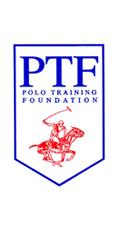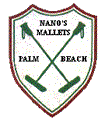The Calgary Polo Club celebrated its 125th year anniversary this summer. Like the United
States Polo Association, it commemorated its founding in 1890. Calgary, along with
Meadow Brook and Myopia Polo Clubs, which were also founded the same year, are the
only North American clubs to continually operate since that time.
It is a big birthday year for the Calgary
Polo Club. Based in the province of
Alberta, Canada, it is one of the oldest
polo clubs in North America, as well as
one of the longest to continually operate.
How has it managed to survive two
world wars, the Great Depression and
countless other economic and logistical
challenges along the way? Put it down to
a horse-loving local population, starting
with some of our most notable
homesteaders and cowboys.
In the late 19th Century, adventurous
souls headed west in droves, seeking to
stake their claim on large, promising
swaths of land in “western Canada’s
burgeoning cattle kingdom,” according to
the Historical Society of Alberta.
Calgary Polo Club founder Alfred
Ernest (A.E.) Cross was one of those
pioneers. Born in Montreal, he
established his A7 Ranche in 1886,
creating a brand that would symbolize
himself and his six siblings. At 13,000
acres, it is the oldest ranch in Canada still
in the hands of the original family.
Besides raising cattle, Cross loved
horses and the sports they inspired. Cross
is well known for being one of the “Big
Four” cattlemen who established the
Calgary Stampede in 1912, but polo had
already captivated him decades earlier. Together with a few like-minded
homesteaders, he founded the Calgary
Polo Club in 1890. Since then, the club
has attracted players from all walks of life.
Cowboys and ranch hands played
alongside decorated military heroes and
business tycoons.
Cross himself was more than a
cattleman. His professional pursuits
included the brewing business, the film industry and politics. Meanwhile, the first
president of the Calgary Polo Club,
Henry Bruen Alexander, built some of
downtown Calgary’s most impressive
sandstone buildings. His real estate legacy
includes the Alexander Block, which still
stands on Stephen Avenue today.
In 1907, the Los Angeles Times wrote
about Colin Ross, one of the many
remittance men who came to Wild Rose
Country (Alberta’s provincial slogan) to
expand their fortunes. Originally from
England, Ross was obsessed with polo. His
unbeaten Calgary team traveled across
North America to meet rivals’ challenges.
The history of the Calgary club is so
storied that longtime player and
supporter Fred P. Mannix commissioned
a book. “Polo, The Galloping Game,” by
Tony Rees, with its in-depth historical
research and extensive collection of
photographs, now occupies a place of
pride on many a member’s coffee tables.
Adventurous and charismatic players
from Southern Alberta would continue to
be drawn to the Calgary Polo Club over
the years, including many from the oil
and gas industry. Charles Hetherington,
President and CEO of Panarctic Oils Ltd,
who started playing in the 1950s,
eventually served as Canadian governor
for the USPA. He played into his 70s, and
one of the fields at the club is named for
him. Another oilman, Jake Harp, who
played for more than three decades,
served as club president for three years.
Meanwhile, the energy industry is still
well represented today, with Pat Powell of
Bonnett’s Energy, Reg Whyte of Broken
Antler Resources, Rob Foster of Tekarra
Project Services and John Rooney of
Northern Blizzard Resources currently
playing in the six-goal league.
However, it is not just O&G at CPC.
Business leaders from all walks of life
play at the Calgary Polo Club. Outgoing
President Anne Evamy runs Identity
Marketing. Gordon Ross is a top luxury
realtor for ReMax. Financial analyst
Cathy Butler is the president of Patronus
Inc. Six-goal newbie and attorney James
Kidd specializes in securities, mergers
and acquisitions. Rancher Scott Palmer
pilots his plane in regularly for games.
Professionals on the pitch this year
included long-time Calgary players Joe
Henderson, Marcelo Abbiati, Pedro
Orellena and Dayelle Fargey, as well as pros playing their first season in Canada,
like Max Menini, Luis Sarraco, Carlitos
Galindo, Isabella Wolf and John Eicher.
Over the years, the club has been a
strong incubator for professional talent.
Following in the hoof steps of his pololoving
father, Frederick Mannix is rated 6
goals in North America and 9 in
Argentina. His career on the world’s polo
stage started at 16, when he played for
Team Canada. He went on to compete for
the coveted Argentine Triple Crown, and
is the second Canadian in 120 years to
play in the Argentine Open with his team,
Alegria.
The club has always been encouraging
to female members, with dramatic
results. In the 1920s, the women’s team
boasted wins both locally and abroad. As the game evolved, the teams became coed.
In 1992, longtime member Julie
Roenisch was the first woman to play in
the U.S. Open championship, making
history. She is part of a family that has
played polo for four generations. Her
husband Rob, who achieved 5 goals,
currently manages the CPC. Their son
Daniel, a 3-goal pro, plays each summer
in Calgary.
The club isn’t restricted to experts. At
the Calgary Polo and Riding Academy, 3-
goal pro Kyle Fargey offers instruction to
novice riders interested in the sport. His
Coaching League has weekly games for
both beginners and intermediates. Over
his 11-year span with the school, Kyle has
inspired many new club members.
The facilities are second to none,”
says Richard Cote, expected to move from
Calgary Polo Club Vice President to
President by year’s end. “The fields are
unbelievable–they are world class.”
During its lengthy history, the club has
been located in several places around
Calgary, but in the 1990s it moved to its
current home on 300 acres of land just
east of the Rocky Mountains, donated by
the estate of A.E. Cross. One of North
America’s largest polo facilities, it has
seven full-sized playing fields, a stick and
ball field, a school field and an outdoor
arena. Barns can accommodate up to 350
horses. A 1.5-mile exercise track borders
part of the property. The club also has an
enviable hitting cage, which is available
for members to use year-round—even
when there is snow on the ground.
During the winter, the club offers
turnout on 40 acres of natural wooded
pasture.
Calgary offers several levels of play.With the number of players steadily
increasing over the last three years, this
summer, the Six Goal had a total of seven
teams. The pro pool, called Club League,
saw new teams formed each week with
three club members and one pro. The
September League, now in its fourth year,
combines an energetic mix of players
from both the Six Goal and Club League,
with one pro on each team.
As the years march on, history keeps
echoing through club activities. Five
trophies still in play date prior to World
War 1, including the Calgary Cup, which
was first awarded in 1892. Prizes often
include bronze sculptures by renowned
artist Rich Roenisch.
This year, as the club celebrated its
125th anniversary, the summer season
was packed with parties. Hundreds of
tailgaters came out for the Canada Day
Tournament on July 1. Veuve Cliquot
hosted their third annual Polo Classic,
with the delectable combination of
champagne and the sport of kings. Other
notable tournaments this year included
the Polo Canada Invitational
Tournament, a joint venture between the
Black Diamond and Calgary Polo Clubs.
The club’s regular social schedule was
also in full swing at the Ranch House,
perching on a berm that offers a fantastic
view of several fields. From Lobster Fest
to the more formal President’s Ball,
entertaining evenings could be relied on
all summer long. Meanwhile, a smaller
clubhouse between Cross and Greene
Fields, was the destination for casual
parties and asados.
In the media department, the club
received coverage in the Globe and Mail,
Canada’s national newspaper, as well as
the Calgary Herald and local TV stations.
The lifestyle of the sport has even inspired
an annual magazine. Calgary Polo Style
published its second issue this year.
Fred Mannix said, “The Calgary Polo
Club owes its long history and success to
the many supporters over the years, but it
must continue to plan for the future as all
polo clubs should do.”
Looking forward, it is anticipated that
the Calgary Polo Club will continue to
expand membership, growing from the
ground up, through Coaching League
and Club League. Meanwhile, eight teams
are expected to play in the 2016 Six Goal.
"It’s the playing members that make
our club so wonderful, and make you
want to come back day after day and
play,” says Richard Cote. “Competitors on
the field. Friends off the field.”
By Tiffany Burns
|









